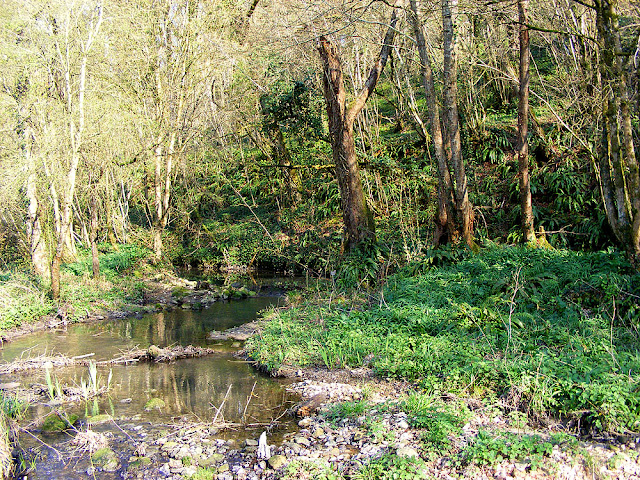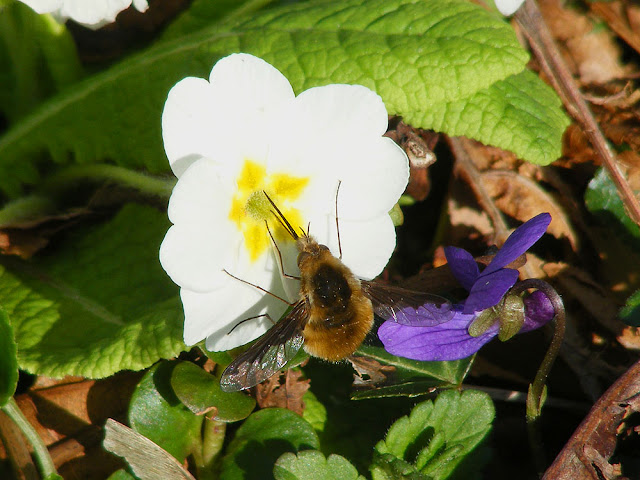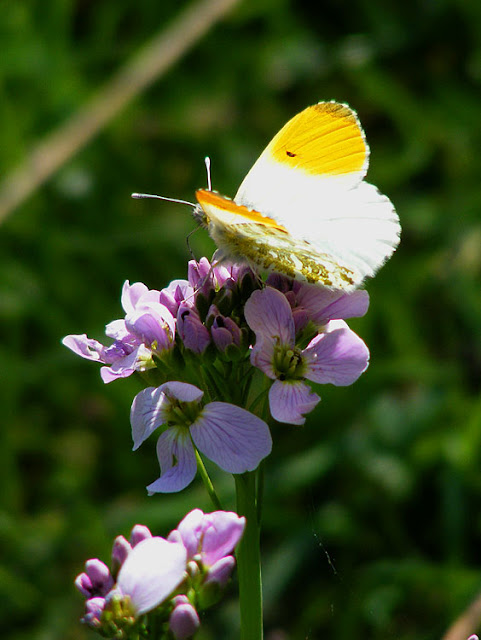More photos from the lichen outing on 23 March. Part I is here.
The lichen Placynthium nigrum, showing the blue fringe of fungal spores.
A brash pile, providing wildlife habitat. Walking along the bank are Gaëlle's mum and her neighbour Julie, who is Canadian by birth and has created Agir A10 to campaign against the expansion of the A10, which traverses the valley.
Corinne examines a lichen on the derriere of a charming statue of a nymph (or is it Atalanta?)
The Courtineau River and millstream.
A Dark-edged Bee Fly Bombylius major (Fr. la Grande bombyle) nectaring on a garden primula. Dark-edged Bee Flies are important pollinators of primulas.
Marsh Marigold Caltha palustris (Fr. Caltha des marais), really a giant buttercup of wet meadows.
Oxlip Primula elatior (Fr. primevère des bois), identifed by the way its leaves abruptly narrow to the stalk and the lack of orange streaks in the throat. It hybridises easily with other Primula spp, but these plants have leaves that narrow gradually to the stem. Some hybrids of Primroses and Cowslips also resemble Oxlips, but they have orange streaks in the throat. Oxlips are rare and localised.
Male Orange Tip butterfly Anthocharis cardamines (Fr. l'Aurore) on
Lady's Smock Cardamine pratensis.
Checking out a lichen on the limestone cliff face with Marie-Claude Derrien, our lichen expert.
A view over the millpond from halfway up the cliff.
What Corinne was looking at. The lichen Protoblastenia rupestris, on the stone statue.
************************************************
For details of our private guided tours of chateaux, gardens, wineries, markets and more please visit the Loire Valley Time Travel website. We would be delighted to design a tour for you.
We are also on Instagram, so check us out to see a regularly updated selection of our very best photos.
We are also on Instagram, so check us out to see a regularly updated selection of our very best photos.












2 comments:
Your photo of a 'Dark-edged Bee Fly' reminded me of an excellent episode of 'The life Scientific' yesterday on BBC Radio 4. They interviewed Dr. Erica McAlister about here work at the Natural History Museum in London. The program was titled 'The Beauty of Flies'.
Yes, I listened to it. Erica is always good value, and she likes the same sort of flies for the same sort of reasons that I do.
Post a Comment